OzFish empowers Indigenous students to reconnect with Country at special lagoon

The beautiful Whittaker’s Lagoon has been a special place near Moree, NSW for thousands of years and OzFish Unlimited proudly helped local Indigenous youth reconnect during NAIDOC week.
A group of around 20 locals participated in a two-day culture camp on Kamilaroi/Gomeroi Country to hear about star stories like the emu in the sky and learn about the ancient native grains found in the area.
Kerrie Saunders from Yinnar-ma Bush Tucker tours and local OzFish Gomeroi/Kamilaroi Cultural Officer Michael Kirk taught the students in nature’s outdoor living classroom. OzFish teamed up with Miyay Birray Youth Services and Moree Local Aboriginal Land Council to host the camp. It was part of OzFish’s earlier project which helped reinvigorate the area.
The revitalisation of Whittaker’s Lagoon has not only protected and enhanced Aboriginal cultural fishing but has also helped to protect threatened native fish species in the area.
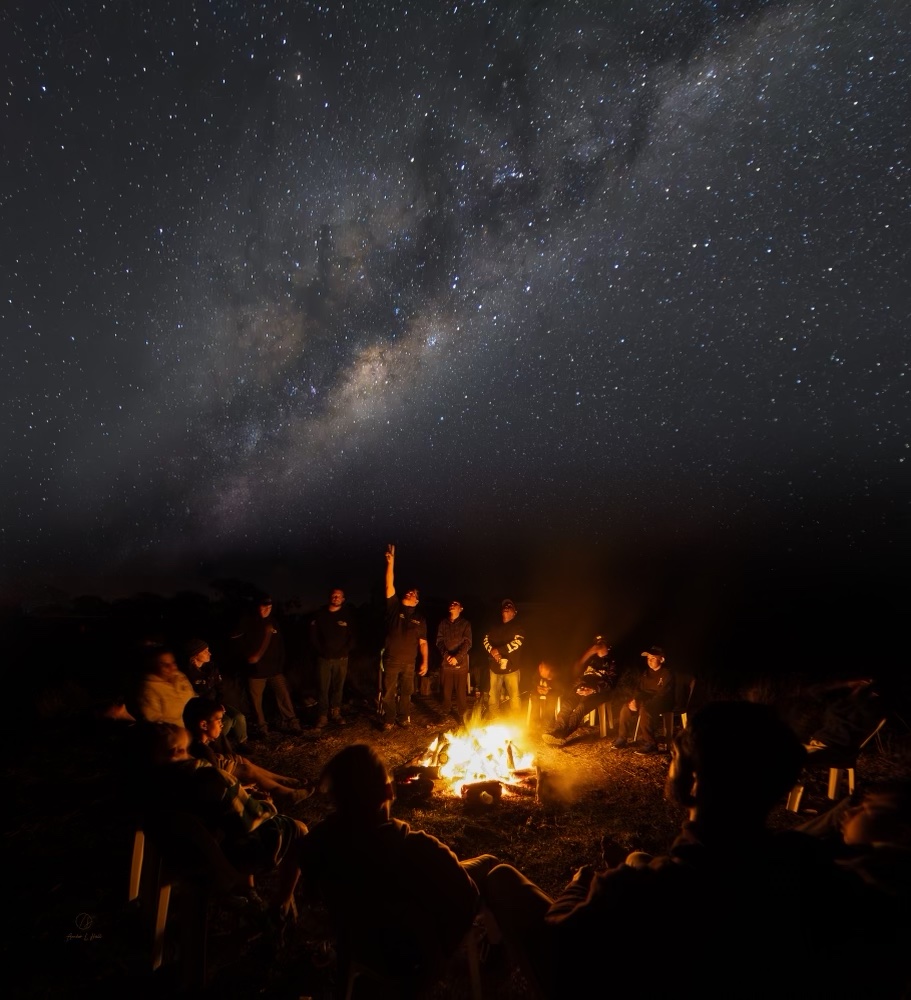
Whittaker’s Lagoon had been impacted by upstream river changes and disconnected from natural river flows due to development. The work led by OzFish to revive the lagoon means the seven-hectare site is now home to an increasing number of fish.
OzFish recognises that our work is on the lands and waterways of Australia’s First Nations people, acknowledging the deep connection and understanding they have with our waterways and fish as we stand shoulder to shoulder to protect and restore Australia’s vital fish habitats.
OzFish Senior Project Officer Taylah Kirk said it was a privilege to be invited on Country to help facilitate the camp activities.
“The idea was that on Monday night the boys go out with Elders and Knowledge Holders and learn traditional ways and the importance of being on Country to their culture and heritage,” she said.
“And how to be leaders and continue that culture for future generations, and we did the same with the girls on the Tuesday.
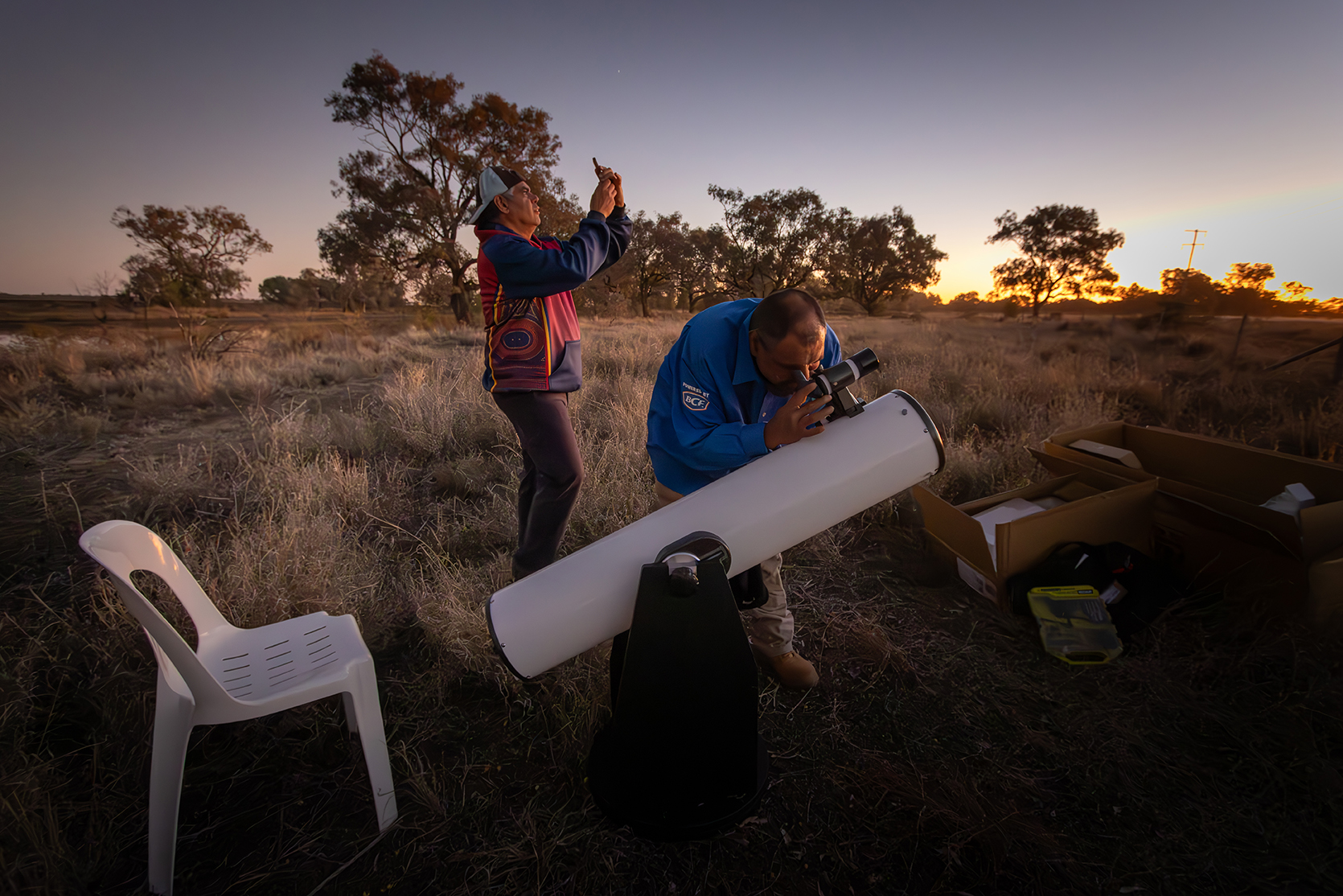
“OzFish works with local communities to create stewardship of their rivers by spending time on Country listening and learning from Elders and Knowledge Holders ways about the ways we can support them in habitat restoration.
“We look forward to working with these local communities in the future.”
Harry Davey, Jay Barnett and Michael Kirk from the OzFish Northern Murray-Darling Basin team work closely with First Nations communities such as Miyay Birray to listen and learn about ways that they can work together to improve habitat outcomes through community engagement.

They also aim to pass on that knowledge to local students and inspire them to get involved with the work OzFish does.
“It turned out to be exactly what we had hoped for as far as picturing what a youth cultural event would look like,” Davey said.
“It was a pretty successful event. It ended up being a very special couple of days.”

He described the area as “a native pharmacy” full of bush medicines and tucker, particularly a good spot to catch yabbies.
“It’s got great cultural importance,” he added.
Yarning circles for men, women and Elders “all connected like a river” have been set up at the lagoon.
The boys were taught by Michael Kirk and other elders how to make clap sticks and about why Indigenous people have looked to the stars for the emu constellation for thousands of years.
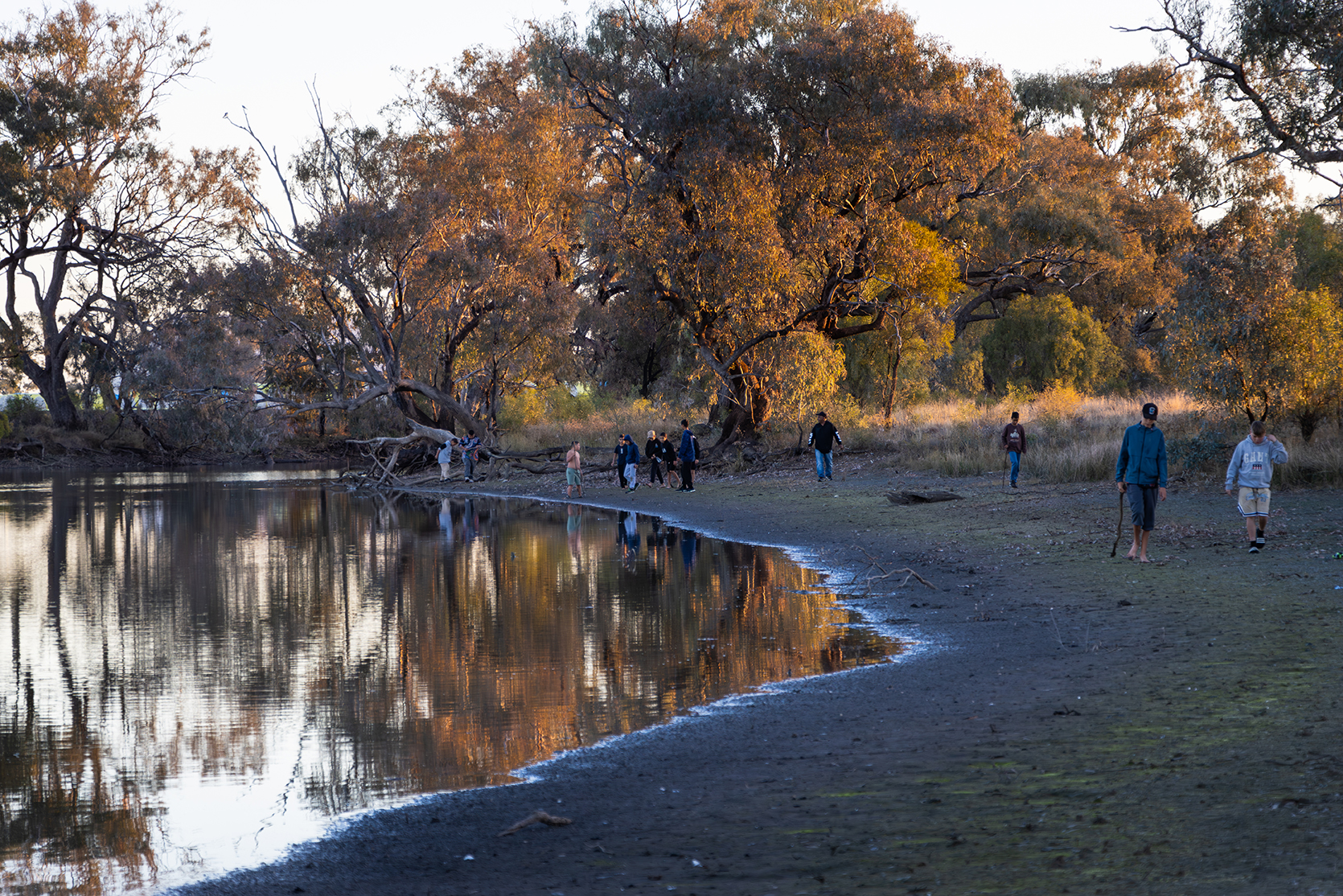
It was also an eye-opener for many of them to learn that they could make a career out of being an Indigenous ranger, supporting conservation efforts and educating the next generation about the knowledge that has been passed down through countless years.
“It was great to share the stories about the stars with them,” he said.
“When you can see the emu (constellation) in the milky way it tells us when the emu is laying eggs.
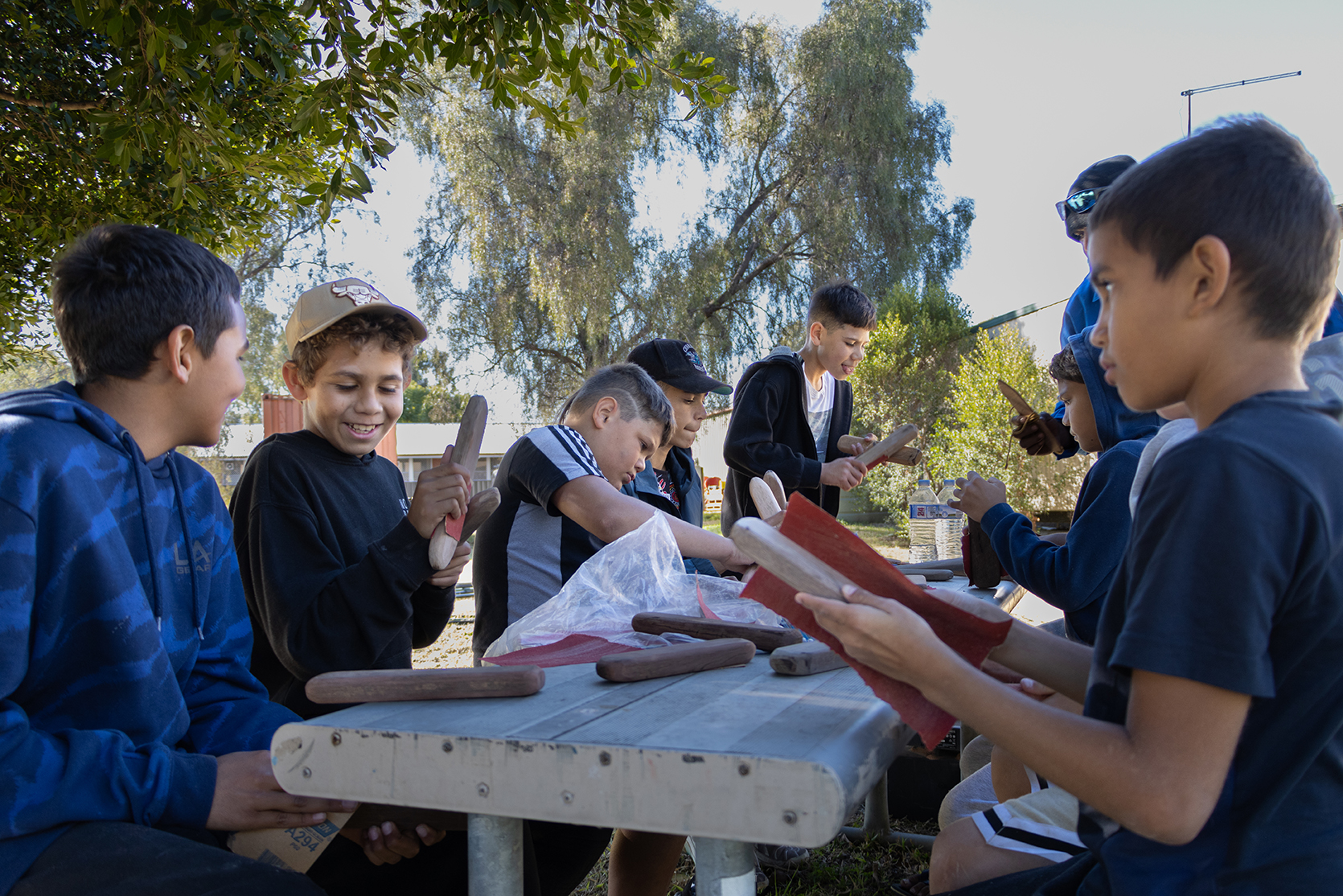
“It was all pretty insightful for the young fellas to learn about how the old fellas used to use stone tools to shape their spears and boomerangs.
“It’s a pretty magical place out there. You’ve got all your meat, fruit and flour sitting out there.”

There’s a trick to making the flour and Saunders, the owner of Yinnar-ma Bush Tucker Tours, was delighted to share that knowledge with the girls at the camp.
“I taught them how to make the flour like our ancestors did. There’s certain species of grass we work with Mitchell grass, or the native word is ganalay,” she explained.
“The students learned the whole process from identifying it to what part of the plant you take and how you separate the husk from the seeds. Once you get the seeds, you clean them and grind into flour on a traditional grinding stone.
“Once the flour was mixed, they all made their own little Johnny cake, small bread.
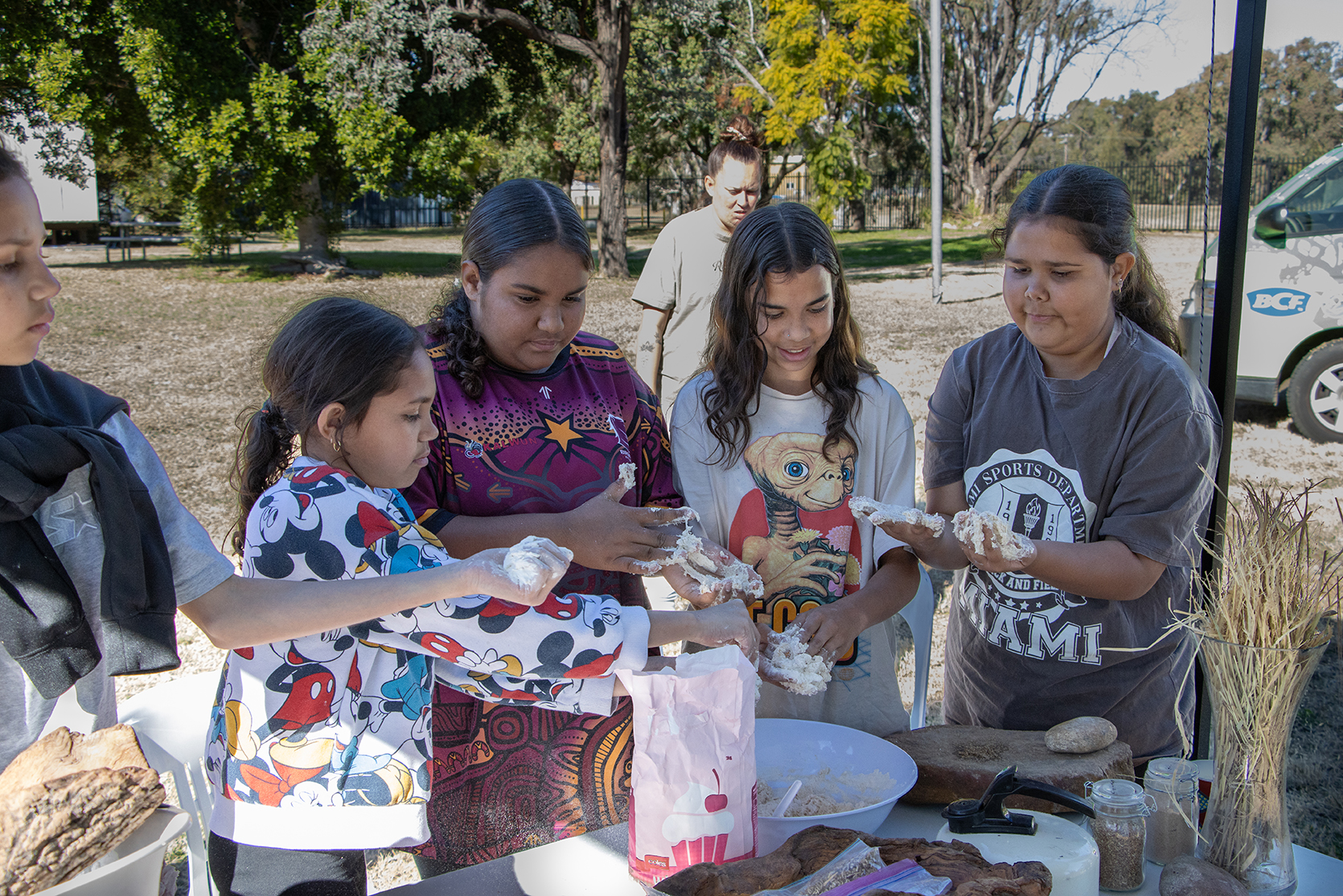
“To get them connected and let them know about their cultural heritage was great. To let them know that when they look out to Country they can see what’s out there. Once they see it, they feel it.
“It’s empowering because a lot of it was lost. Some families don’t speak about it at home. Having that feeling of self-belonging is empowering and most of all knowing who you are as an Aboriginal person.”

This project was a partnership between OzFish Unlimited, Miyay Birray Youth Services Moree Local Aboriginal Land Council, the NSW Recreational Fishing Trust and BCF – Boating, Camping, Fishing.

